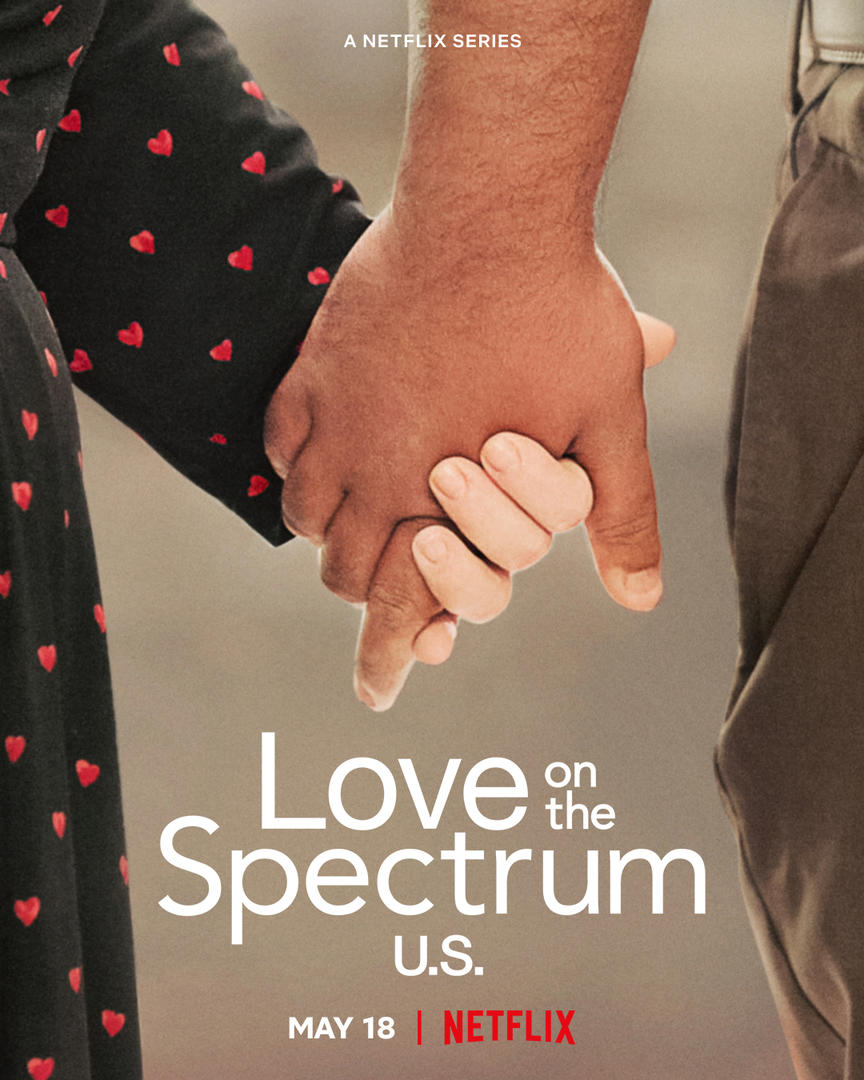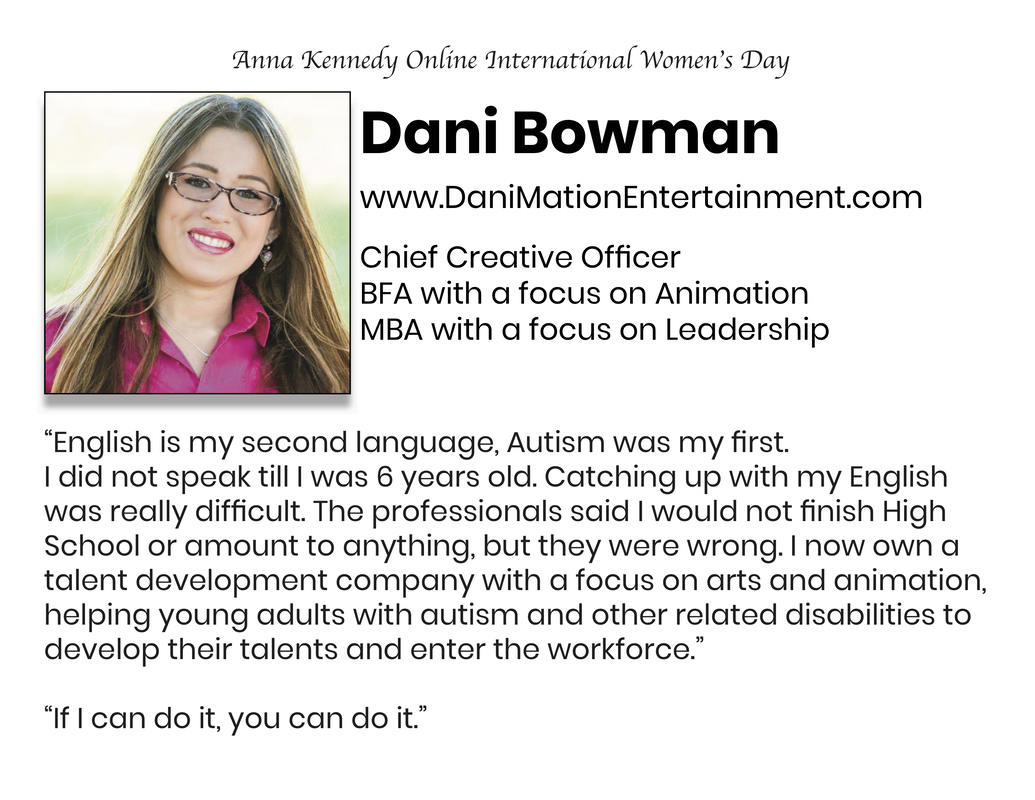|
Here is a collection of different articles that featuring Love on the Spectrum US.
It’s finally out!!! I’m on @netflix ‘s “Love On the Spectrum U.S.” Finally I can talk about it! Yay!! The suspense was killing me! I've waited over two years to finally be able to share this amazing experience with all of my peeps! And today the trailer finally came out and I’m finally able to share my experience! “Love on the Spectrum”, the Netflix award-winning Australian series that had two seasons has come to The US to do our own version, and I'm one of the main six participates on the spectrum that are looking for love on-camera. I think it was so respectful and caring to our need as we filmed as we navigate the world of dating and relationships. I'm so incredibly proud to be part of this project. Premiering on Netflix, May 18th! #loveonthespectrumus #DaniBowman #loveonthespectrum @devinmorrissey On July 20th - 24th 2020, DaniMation Entertainment hosted a virtual summer animation workshop to students with autism from the United States and England. Each student worked on their animated shorts from concept to completion as shown in this video! Stay tuned for more student Interviews and a student showcase of animated short films! A huge thank you to Toon Boom Inc. for providing the software to make this virtual animation workshop possible! For more information about the Free Online Classes and 1-on-1 Sessions offered by yours truly Dani Bowman (MBA, BFA, and CCO of DaniMation), visit at www.DaniAcademy.com! External LinksA huge thank you to Anna Kennedy for showcasing my article I wrote for Mental Health Awareness week as a series of articles she has been featuring on her websites each day this week from the autism community about how we are dealing mentally with this pandemic.
I’m very proud to be Anna Kennedy’s overseas Ambassador. We first met in 2014 when I participated in an event she holds in London during fashion week called “Wear it for Autism”. A year later I became her overseas ambassador. Take a look at my article and the other articles as well. It’s good to see how everyone is coping with pandemic, no matter where we are in the world. www.annakennedyonline.com/mhaw-article-dani-bowman/?fbclid=IwAR3BN6IxHMYvvmPSTABLDtjYwSiaWQY3f1bwPOCA6iS3gQrmt9n49xqq294 I am incredibly grateful for this honor– receiving the Beta Gamma Sigma 2020 Entrepreneurial Achievement Award and thank you to Dr. Joan Marques Dean of Woodbury University School of Business for nominating me and believing that I deserve such an honor.
I am so proud to be an alumni of Woodbury's School of Media, Culture and Design with my BFA in Animation, and this May 2020 from the School of Business with my MBA in Global Strategy and Leadership. In my personal academic experience of my last 7 years at Woodbury, the school does an amazing job of making all students feel comfortable and welcomed including people with different abilities such as autism like myself. Woodbury has always supported me in my education ever since I began taking classes when I was in the 10th grade of High School. The chair of Animation at that time Dori Littel-Herrick believed in me, and allowed me to take part in a sophomore studio and junior studio class, even though I was just a high schooler–which really gave me confidence to go forward with my college career. Before Dori, all I ever heard from educators was I would not be able to even graduate high school because up to the 10th grade, all I had was special education classes due to my autism, but Dori believed in me and gave me the confidence to take the classes that I needed in high school to graduate and qualify for university. For the past 7 years, I've had the best experience at Woodbury, first by taking classes while in high school, and then my undergrad receiving my BFA in Animation, and now this May, I will be graduating from the school of business with my MBA in Global Strategy and Leadership. It would of been incredibly difficult to gotten this far without the belief and confidence of my professors and staff at Woodbury. So thank you to everyone at Woodbury for such an amazing educational program. But especially thank you to Dori Littel-Herrick of School of Media, Culture, and Design for your belief and your guidance. Also thank you to Mike Sonksen of Woodbury's College of Liberal Arts for such insight of creative writing, poetry, learning all about my city of LA and your encouragement, and of course Dr. Satinder Dhiman Associate Dean of Business for your support and your continued belief that I can take my education to the next level of doctrine in positive psychology and Dr. Joan Marques the Dean of School of Business for your belief in me. You will never know just how much you changed my life, and I will go forward doing my best to change the world for you and make you proud. As always, I would like to say thank you to Anna Kennedy of Anna Kennedy Online for having me as the Overseas Ambassador!
In my university Junior year during my Biology class, I met Ali Dwas. He is an international student, majoring in film.
He said he was having a hard time and was ready to give up and return to his home country. But when he met me and saw what I was doing despite of my challenges, he became inspired, so he decided to do his junior thesis film on me, “Dani 101”. He received an award from our university for the “Outstanding Junior Film”. And it premiered at the PSIAF 2018 Palm Springs Intl. Animation Festival & Expo, opening up the Academy of Dream Awards panel. Quote from Ali, “Dani gave me and my family a better understanding of how to treat my autistic nephew, and how to not allow challenges to stop you from reaching your dreams”. This is the trailer to the documentary. Unfortunately, we cannot show the full movie because he has entered it to film festivals, so you have to show up to PSIAF 2018 to see the whole mini-documentary. It’s only 11 minutes long because it’s a student film. Ali, I really think you did a great job, thank you so much.
When I was at Comic Con Palm Springs last month August, I was featured in KMIR news.
Thank you to Lauren Day KMIR of KMIR News for featuring me and my 8th animated short and senior thesis The Audition. |
AboutThis is a blog about Dani Bowman's Adventures as a person on the autism spectrum doing what she does best through Animation, Illustration, Public Speaking, Teaching Animation, Autism Advocacy, and Fine & Visual Arts. Archives
May 2020
Categories |



 RSS Feed
RSS Feed
